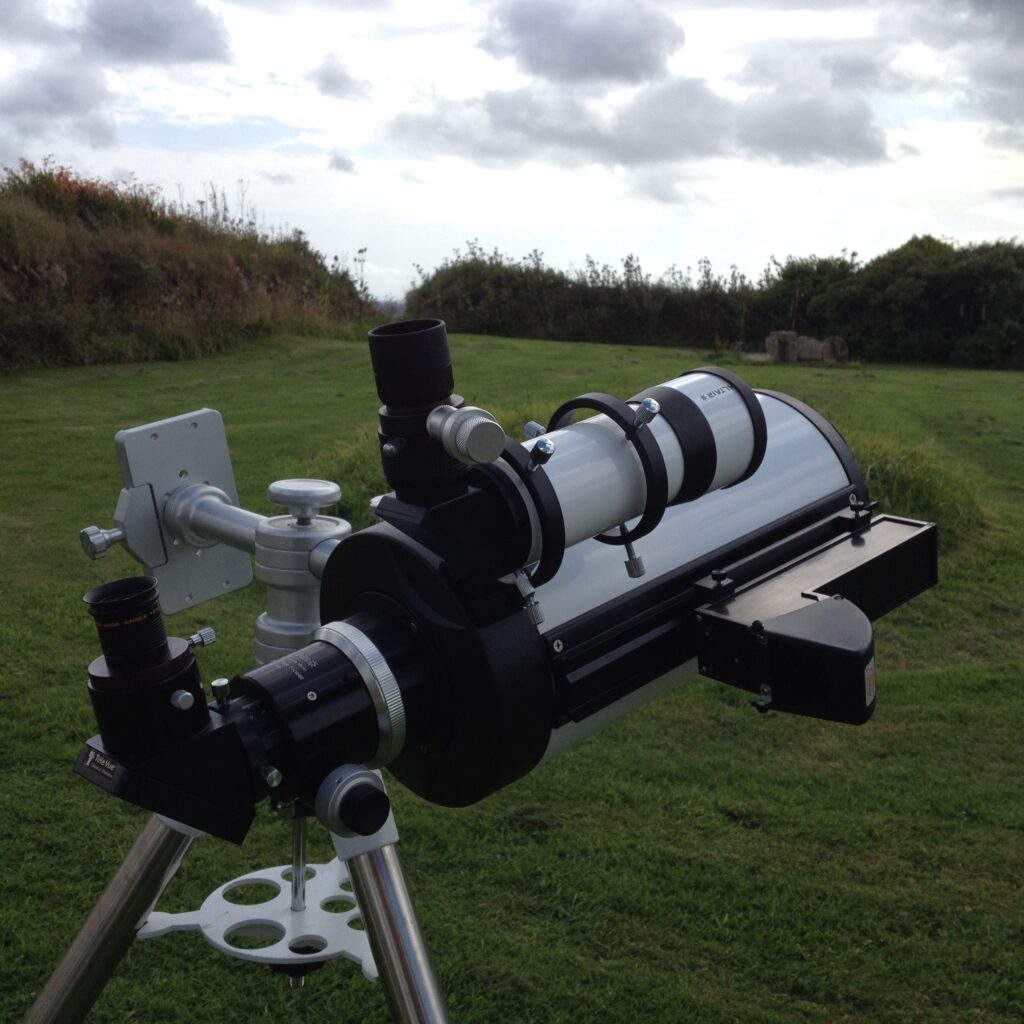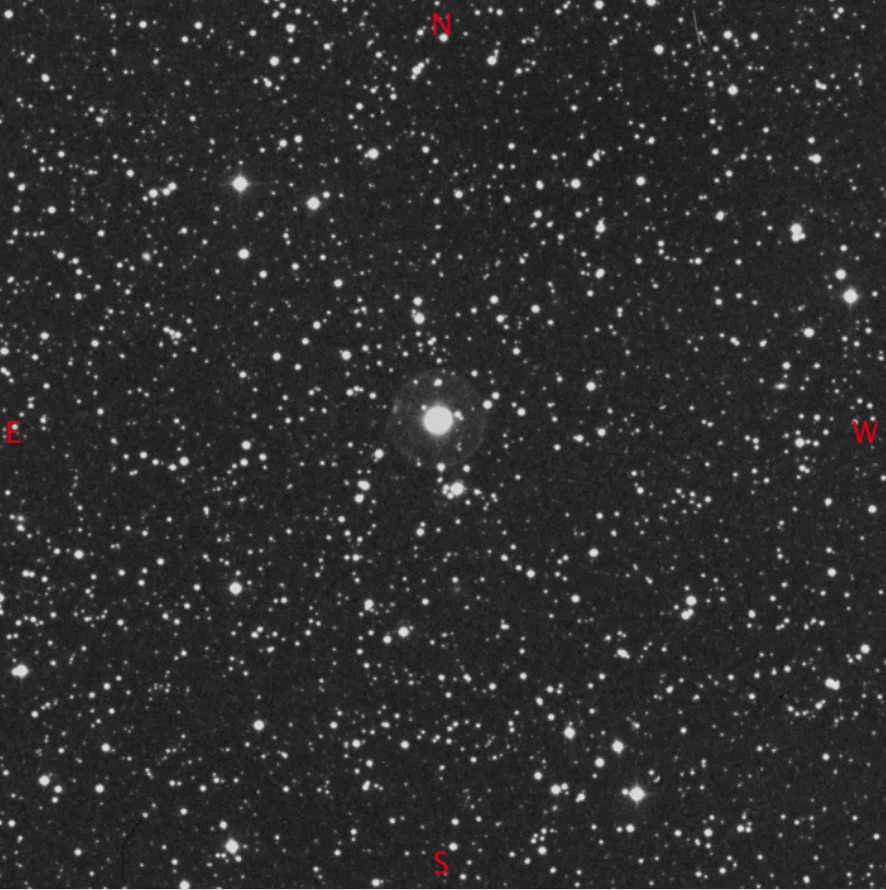The weather has been trying to give me clear skies during the period of darkness for weeks, but not until last night, has it actually succeded. Unfortunately, it coincided with a 98% illuminated Moon, which completely drowned out hope of seeing any galaxies or faint nebulae. Looking at my progress through the Caldwell catalogue, I seem to have done all the low lying fruit, so the majority of objects still to observe are guess what – galaxies and nebulae.
The transparency was particularly bad too, so all I could find on a couple of attempts and seeing something was the planetary nebula NGC6826, C15.

I’ve now also added a Tetrad Red Dot finder to my 150mm R.C travel scope. Never having seen one of these in the flesh before, I was somewhat surprised to find out how basic and ‘plasticky’ it was. Having said that it does what it says on the tin. It also takes normal AA sized batteries, which means it won’t cost you a fortune in button cells when you forget to turn it off. I also got the little dew shield that’s made for it, as I could see the projection glass dewing up in no time without some kind of protection.
Having used it last night, it all seems to work well. Rather than just project a single dot onto the glass, the Tetrad displays three circles. A 0.5 inner, then a 2.0 middle and a 4.0 degree outer circle. To be honest I find the 0.5 inner circle useless for anything except aiming the scope on say the first star of a star hop. The outer 4 degree circle then allows you to move the requisite number of degrees to the target area before you even have to look through the finder scope. This only works though, if you can see enough naked eye stars at the edge of the 4 degree disk each time you move.
The On/Off switch also acts a dimmer, so you can dial in just the right amount of illumination for the conditions. The other major plus, is that the tree collimating screws that are easily located on the back. This makes the whole process a real doddle and one that doesn’t require small fingers and thumb, a screwdriver or even worse, an allen key, which most red dots seem to use.
I got the finder with the dew shield for about £55.00, which seems to be about right for a decent red dot these days.
Session Data
- Date: 06/08/2015
- Time: 20:55 – 00:45 UT
- Seeing: IV Unstable,
- Transparency: IV Somewhat Clear,
- Temp:11.5c, Air Pressure: 1006mb,
- Humidity: 89%, Dew Point: 9.7 ,
- Wind Speed: 4mph,
- SQM: 17.4 mags/arcsecond,
- NELM: 4.8mag
NGC6826, C15

In the Altair Astro 250mm, 10mm Delos, 203 X, 21.3′, West is to the 11 O’Clock.
Despite the terrible transparency, this PN, was easy to see. It brightened up considerably with AV, where the core seemed to be brighter than the inner 75%. The outer 25% seemed to consist of a faint halo and the whole object reminded me of the Airey disk of an out of focus star.
NGC5195, M51
Practiced a little star hopping with the 150mm R.C. I correctly identified the star field, but wasn’t able to make anything out.
Not seen.
NGC5457, M101
Same as above.